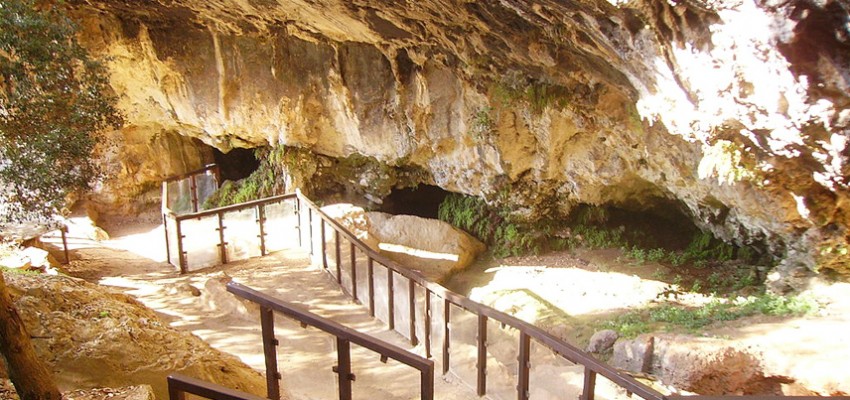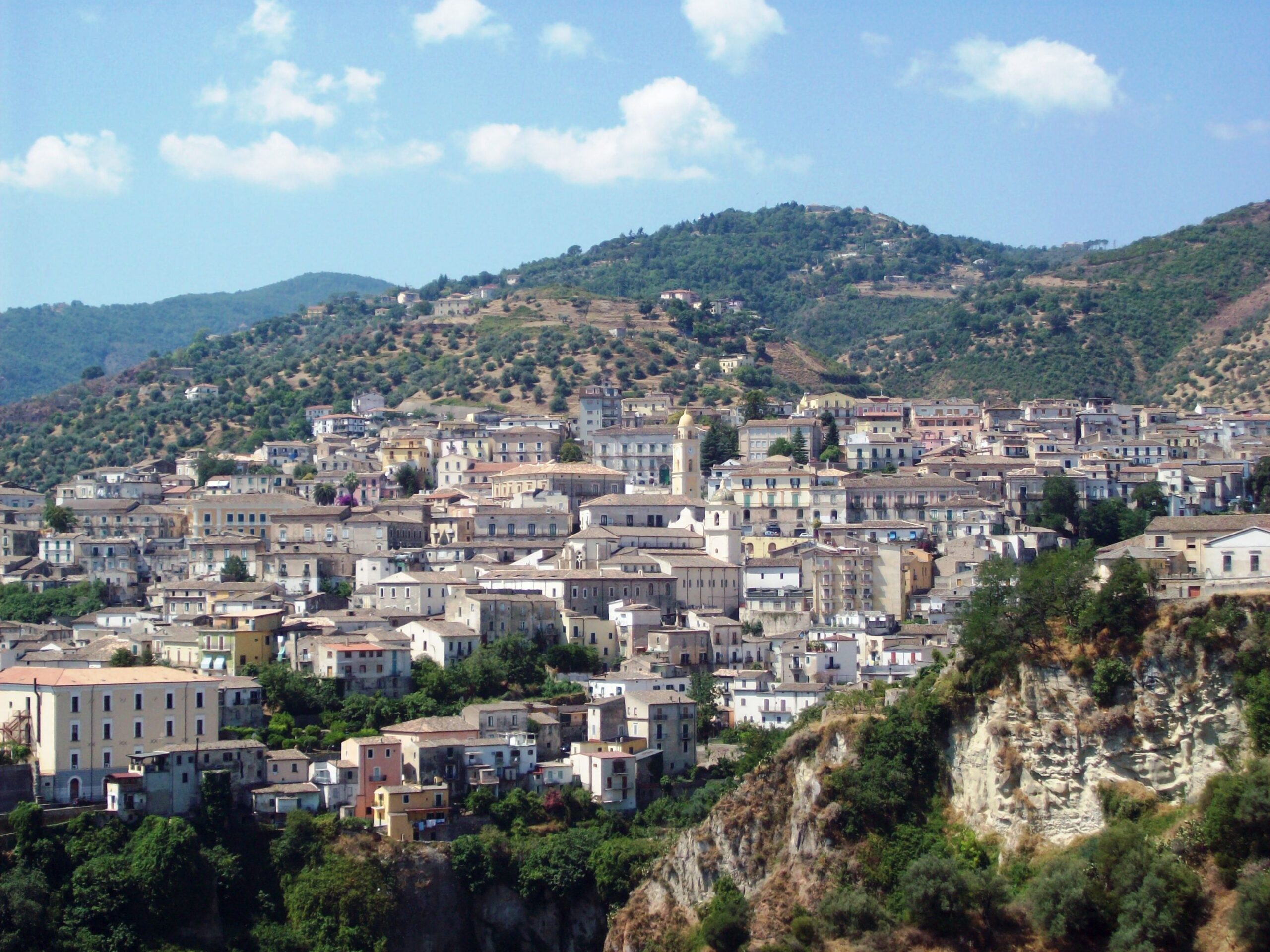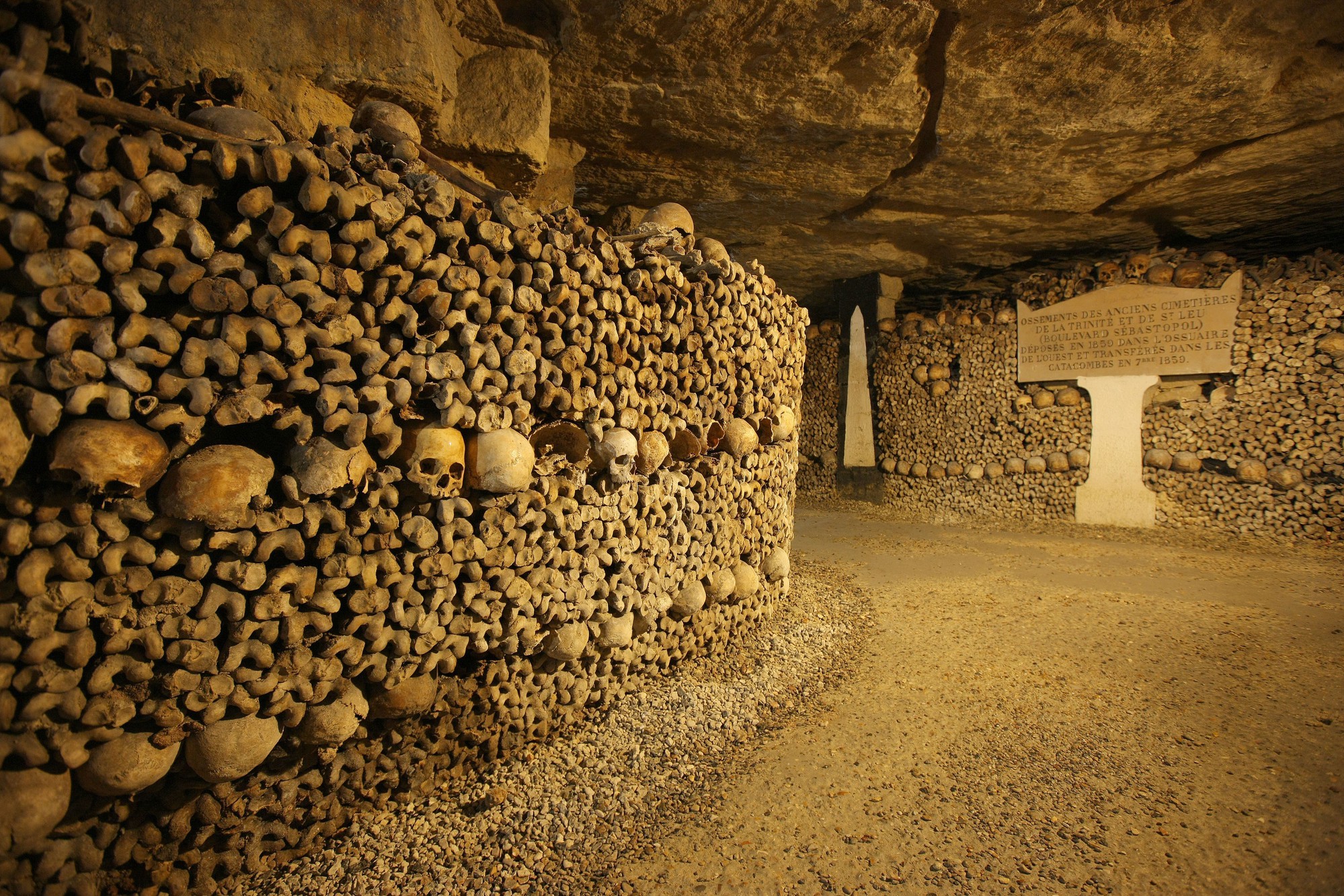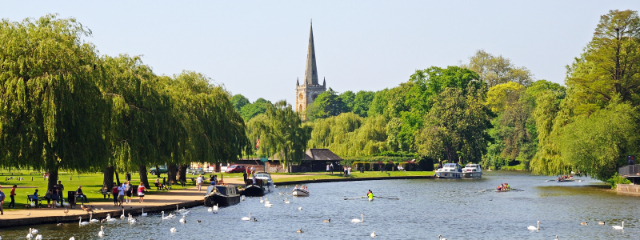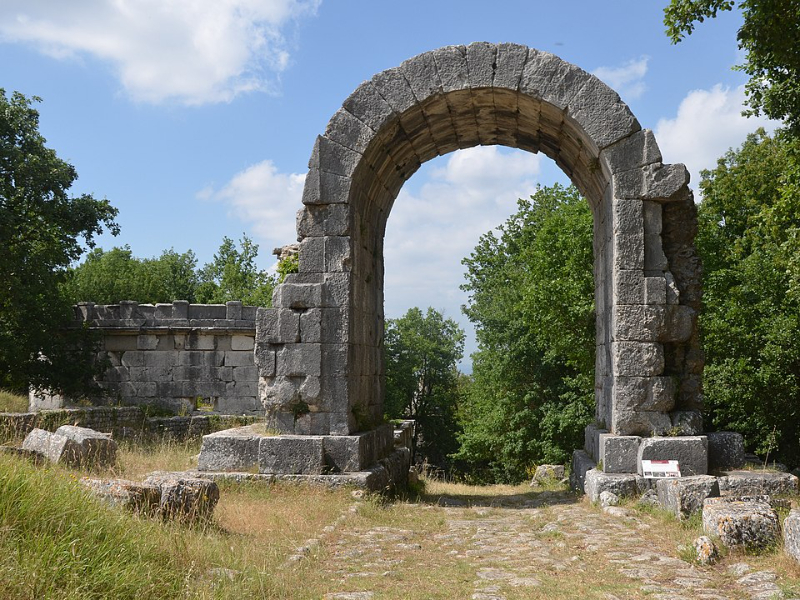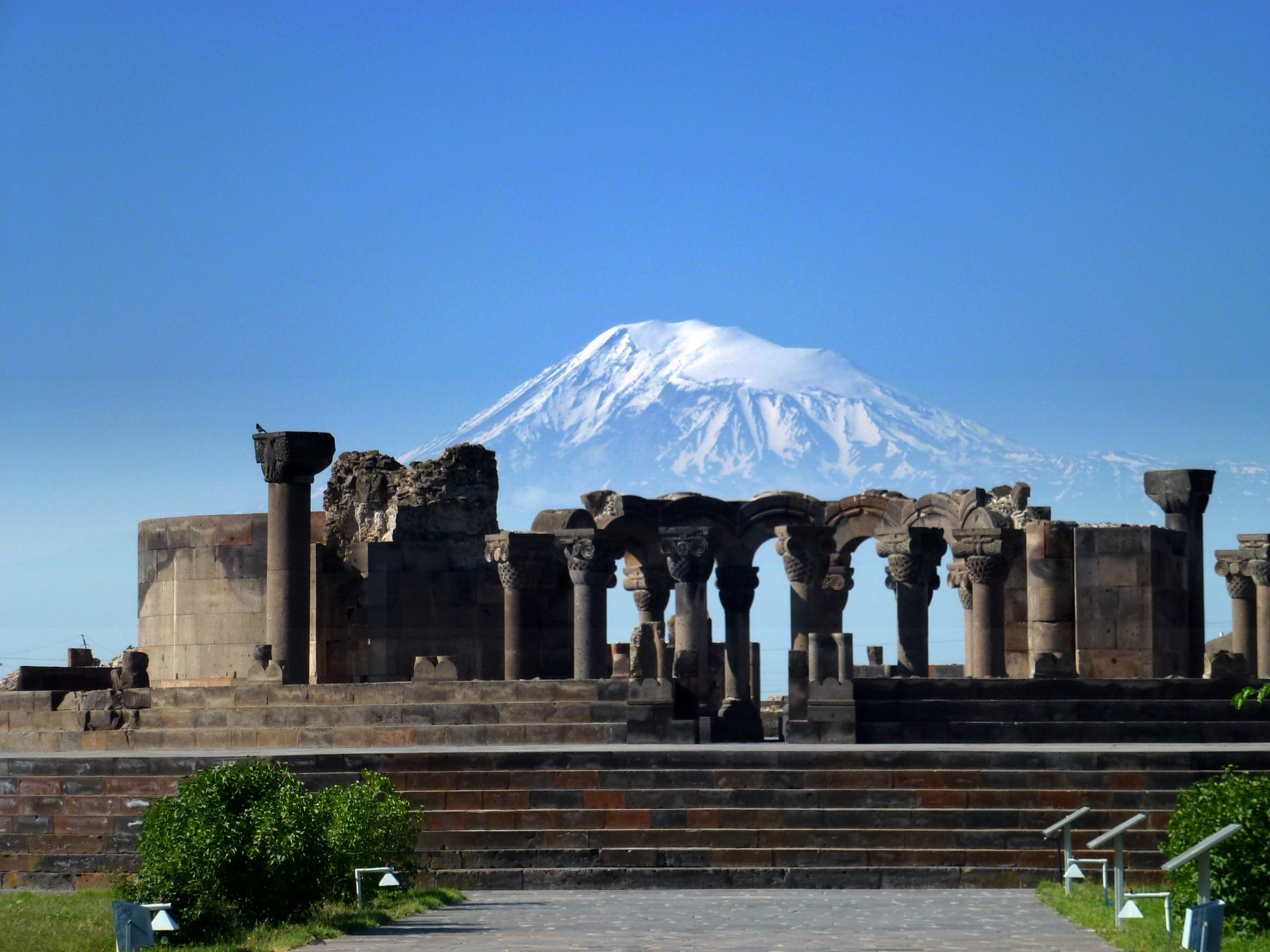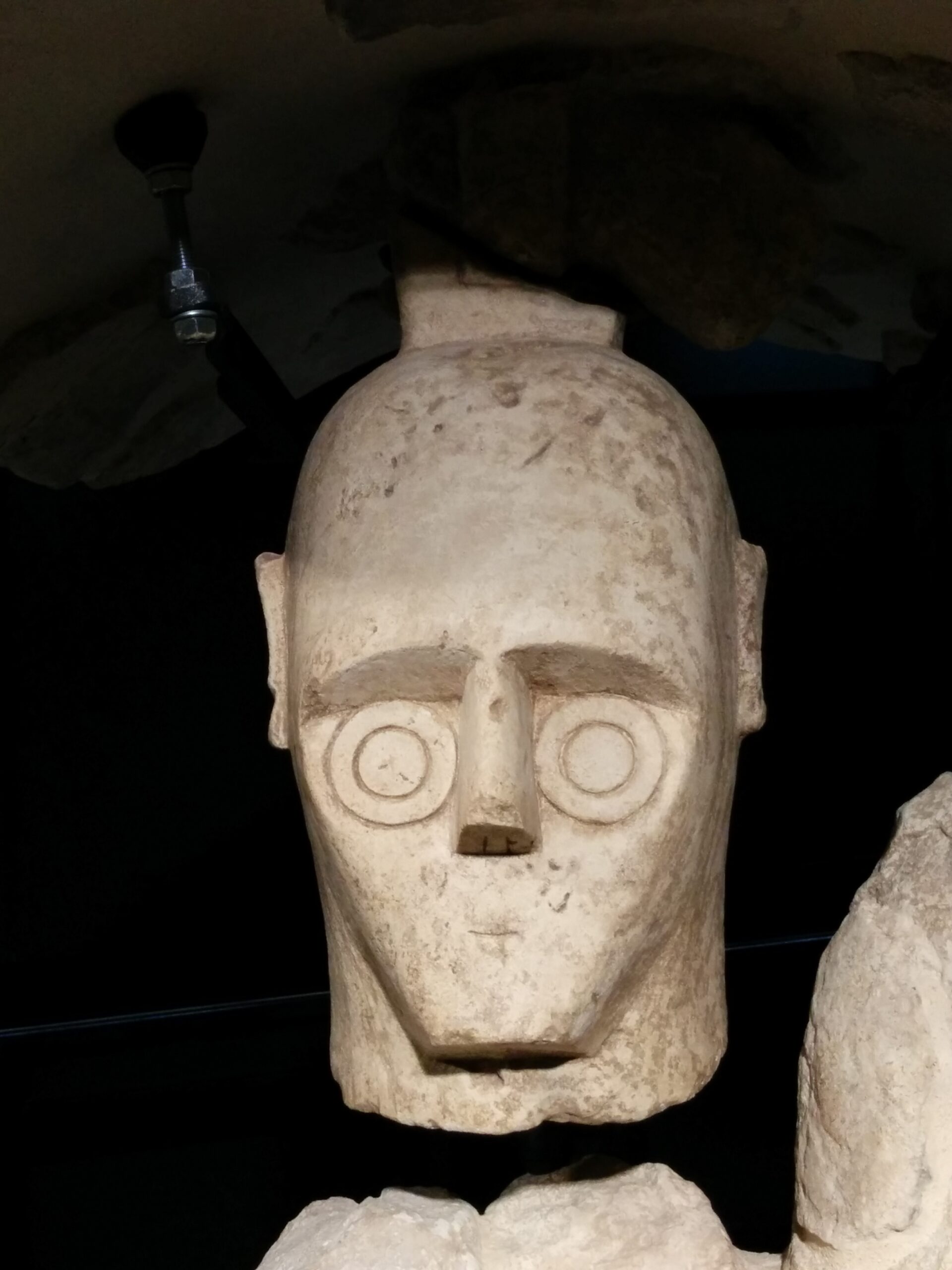The very important discovery of the Romito Cave, which took place in 1961 in the territory of Papasidero, cast an extraordinary light on the prehistoric events of northern Calabria, showing that it had been inhabited for at least 20,000 years ago.
The Romito man was of the Cro-magnon race, he didn’t know how to raise animals and he didn’t know agriculture and ceramic working.
The cave is divided into two distinct parts:
– the actual one, about twenty metres deep, which enters the limestone formation with a narrow, dark tunnel and the shelter that extends for about 34 metres in an east-west direction.
For the Neolithic, the analysis of carbon 14 gave 4,470 B.C., while for the layers of the Upper Palaeolithic, the oldest so far datable, dates back to about 16,800 years BC.
Homo sapiens inhabited the cave very intensely, leaving countless testimonies of his passage in lithic and bone tools, in the wonderful graffito and in the remains of his own skeletons.
The figure of a bull, about 1.20 metres long, is engraved on a boulder about 2.30 metres long and inclined at an angle of 45°.
The design, of perfect proportions, is executed with a secure stroke.
The horns, seen from both sides, are projected forward and have a closed profile. Some details such as the nostrils, the mouth, the eye just mentioned, the ear, are represented with care.
In great evidence the skin folds of the neck and very accurately described the fissured feet.
A segment crosses the figure of the animal in correspondence of the kidneys.
Below the large bull figure there is engraved, much more subtly, another bovine figure of which only the chest, the head and a part of the back are executed.
In front of the boulder with the bovid there is another one of about 3.50 meters long, with engraved linear signs of apparently incomprehensible meaning.
The Neolithic frequentation of the Romito cave is documented by the discovery of about fifty ceramic shards that reveal the existence of the transit of the obsidian trade from the Aeolian Islands.
In the cave, visited by many tourists, it is possible to observe, in the place of their discovery, burial reproductions dating back to around 9,200 years BC. each containing a pair of individuals arranged according to a well-defined ritual.
One of these burial couples was found in the cave and two other couples in the shelter, not far from the boulder with the figure of the bull.
Of these pairs of skeletons, the first is kept in the National Museum of Reggio Calabria, the second is in the Florentine Museum of Prehistory, together with the lithic splinters (about 300) found in the various layers examined in the shelter and in the cave, the third is still under study by the Institute of Prehistory in Florence.
